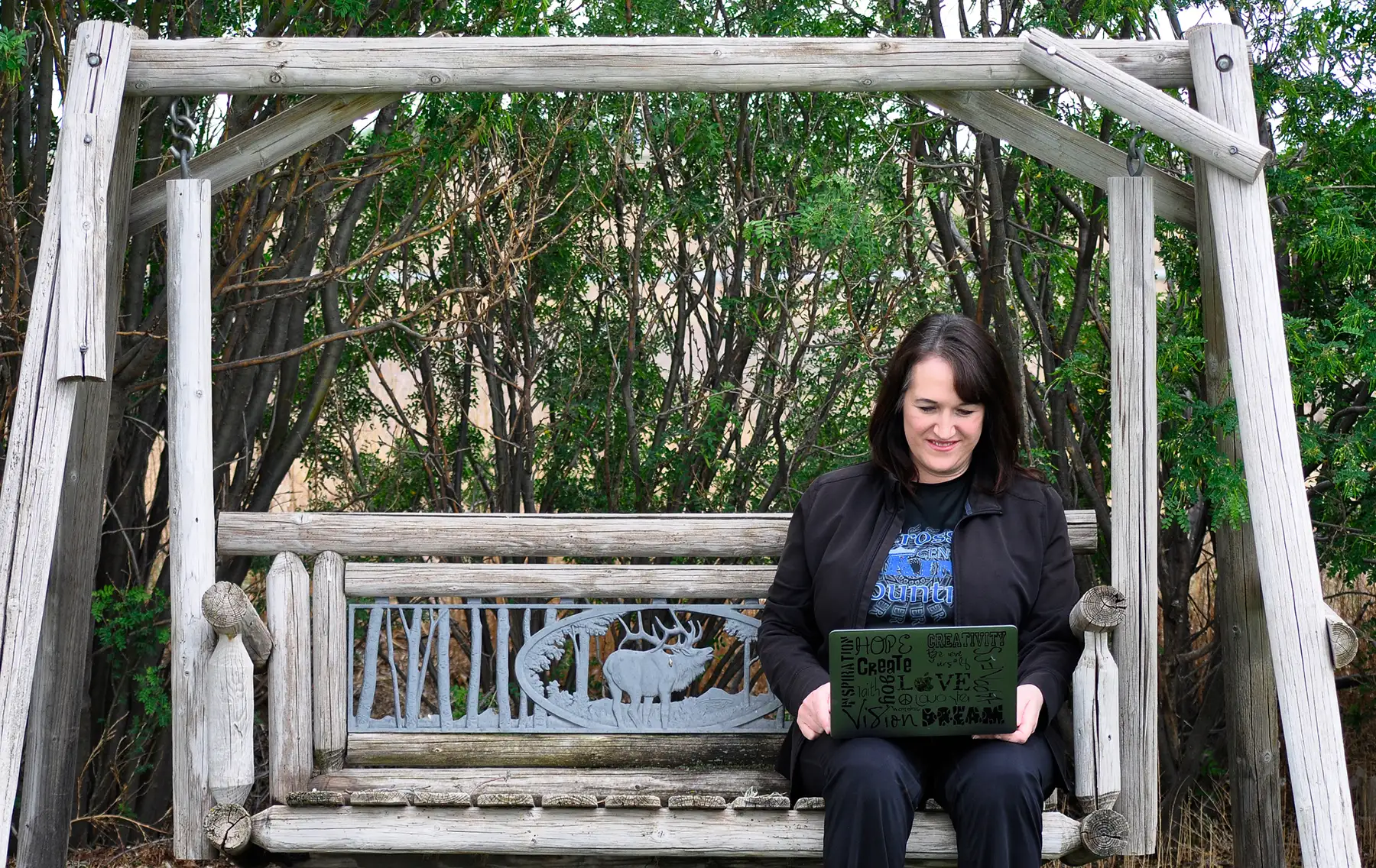Today is going to be a good day in the eyes of Katrina Ruggles. The habitual optimist, this is the daily devotion she gives herself as she scans her overscheduled calendar.
This day, in particular, has significance. Ruggles will teach in person to her middle and high school students in Center Consolidated School District 26JT for the first time in more than a calendar year.
“We’re coming full circle,” she says, with joy radiating from her voice. “I think back to a year ago right before spring break and literally the day before we went into a training on trauma-informed care and responsiveness. And then COVID hits.”
The timing on the training was prophetic and the year since certainly can be characterized as, at times, traumatic for students, families, and educators in the rural San Luis Valley District. But it has also been a year of so much more.
A 21-year educator in the district whose multiple hats include counselor, teacher, and grantwriter, Ruggles says the past year has helped her rural district and community to rethink education with a perspective she has made her life’s work: focusing on the whole child.
“We have placed a deeper emphasis on social emotional wellness,” said Ruggles, herself a mother of six with her kids ranging from early elementary to college age. “Keeping a spotlight on that has been my priority. Many teachers have been worried about lost learning, which is important, but my focus has been about lost connections.”
Connecting is Ruggles’ superpower, and it always has been. A native of Sanford, a rural town located 45 miles southwest of Center, Ruggles has built her career on being a resource for her community.
Her ability to mobilize people was never more evident than last spring and summer. First there was the rollout of a plan to call every one of the 400 families in the district multiple times to connect with them so that students could finish out the year successfully, in particular the 2020 graduating seniors. The other motivation of the phone calls – to ensure that every family could connect virtually to classrooms and each other.
Not much to her surprise, Ruggles said nearly 60 percent of families didn’t have functional Internet at home. Upon seeing that data point, it was time to get to work. Ruggles’ team, called the Center Positive Youth Development, includes two parent liaisons and facilitators, a counselor, and a social worker.
After three weeks of around the clock coordination with the Colorado Health Foundation, which provided funding support, and local providers Ciello and Go Jade, the families were online. This was a major feat for a district where 90 percent of the students qualify for free or reduced lunch.
Then, in combination with social services and the nonprofit organization she founded, Center Viking Youth Club, Ruggles helped coordinate drives to give away food, hand sanitizer, masks, and toilet paper.
More than 1,500 people showed up for the drive, many of whom logged significant drive times for the support.
Relationships with families, often spread miles apart across the 650 student district, were already built on a strong foundation. This is because Ruggles is known for one of her primary outreach strategies – in-person home visits. Though they were no longer possible, she shifted her focus to training other educators on how to conduct virtual visits with students and families.
“Family and school partnership is something that has come out of COVID as an impetus for community-building,” said Ruggles, who manages a district grant portfolio currently of $2.3 million.
The foundation of school-to-family collaboration is also helped by a district-mandated advisory period where the emphasis is on teachers knowing their students personally. At times, she said, teachers have pushed back against advisory because it adds to their daily list of responsibilities, sometimes outside of their subject matter expertise.
“Suddenly there was less push back,” said Ruggles, who is currently finishing her Ph.D. program in counselor education at Adams State University. “Everyone was saying we have to check on our kids to see how they are. What we started to see was social-emotional wellness elevated in a way it hasn’t been before. We are at a tipping point to see positive change.”
That change, Ruggles says, hopefully will continue with offering more flexibility with how and where students learn.
Some students, she said, have found they learn better online while others recognize they are stronger learners in school. Behavioral issues have dropped dramatically this year, an interesting data point Ruggles says she will continue to follow.
Leadership, Ruggles says, is focused on continuous improvement and thinking about how to prevent the mistakes or misses from the past. Two things that still haunt her: the inability to locate a few students and families last year and the increase of students who failed courses last spring and during the fall 2020 semester.
Data are an important part of Ruggles’s work as she follows her students long after they graduate. She points out that in 2004, only 20 percent of the district’s graduates were going on to postsecondary education. For the past four years, that number has increased averaged about 91 percent.
In thinking about COVID’s long term effects in education, Ruggles says she has her own worries as a parent when it comes to learning loss. In the same breath, she is quick to point out that her family doesn’t struggle for basic needs in the way many valley families do.
For all families, she contends, the solution to overcoming COVID challenges and impacts is the same one she has dedicated her career to – relationship-building with a focus at the system-level that involves teams of educators, including teachers, faculty, administrators, and community resources.
“Though this has been the hardest of years, we’re really on the cusp of something regarding the future of education,” she said.




